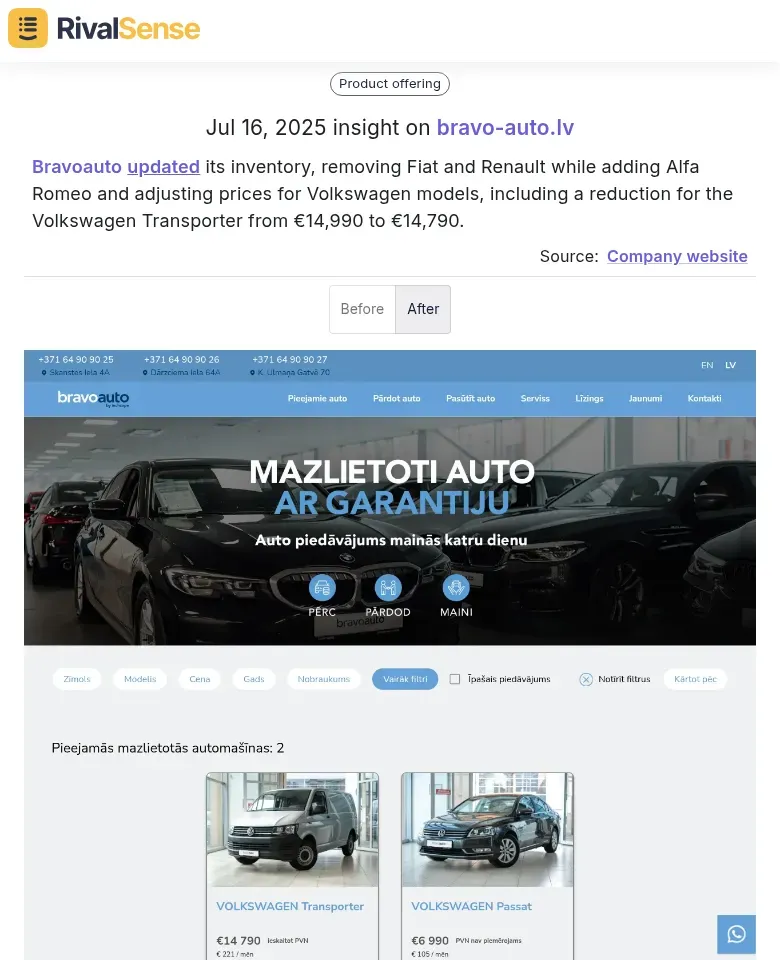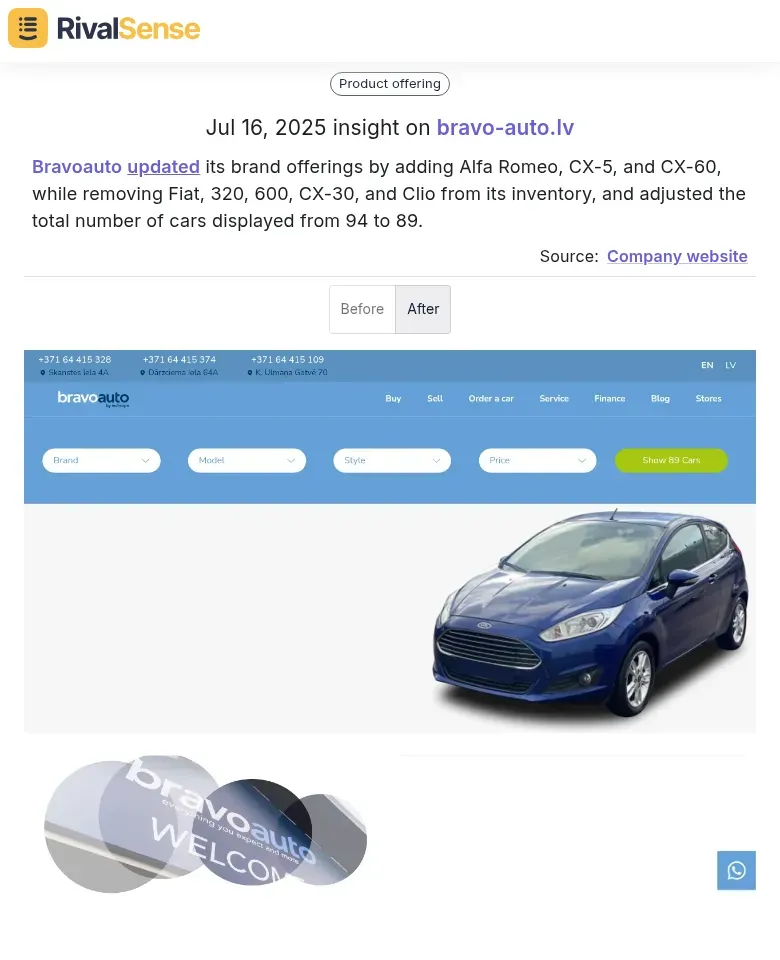Comparative Market Share Analysis: B2B Auto Dealerships
Understanding market share dynamics is crucial for B2B auto dealerships aiming to thrive in a competitive landscape. Market share analysis provides insights into your dealership's position relative to competitors, highlighting strengths, weaknesses, and opportunities for growth. By tracking market share, you can identify trends like shifts in customer preferences or emerging competitors, enabling proactive strategy adjustments.
Competitor actions significantly influence market positioning—from pricing strategies to promotional campaigns. For instance, a competitor's aggressive discounting might temporarily boost their market share but could erode brand value long-term. Monitoring these actions helps anticipate market shifts and craft protective responses.
Key competitor insights include:
- 📊 Sales Volume and Revenue Trends: Benchmark against industry leaders
- 👥 Customer Segmentation: Identify targeted segments
- 📣 Marketing Strategies: Analyze digital/offline campaigns
- 💰 Pricing Models: Understand competitive pricing structures
✅ Practical Tips:
- Update market share data monthly
- Automate insights gathering with tracking tools
- Conduct quarterly SWOT analyses
- Survey customers about competitor perceptions
🧩 Analyzing Inventory Adjustments: What They Reveal About Strategy
Inventory changes offer a strategic window into competitor priorities and market shifts. Tracking additions, removals, and pricing tweaks helps decode their growth tactics and risk appetite. For example, luxury brand additions signal premium targeting, while budget removals may indicate margin focus.
Consider how RivalSense detected this strategic shift:
"Bravoauto updated its inventory, removing Fiat and Renault while adding Alfa Romeo and adjusting prices for Volkswagen models, including a reduction for the Volkswagen Transporter from €14,990 to €14,790."

Such insights reveal how competitors balance portfolio optimization with pricing tactics—critical for benchmarking your own inventory strategy. Real-time alerts on these changes help you:
- Anticipate demand fluctuations
- Adjust procurement timelines
- Counter discount campaigns
🔑 Action Steps:
- Compare your brand mix with top rivals
- Identify high-margin models using sales data
- Rebalance inventory quarterly based on competitive moves
🚘 The Role of Brand Offerings in Competitive Differentiation
Brand curation directly impacts market positioning and customer perception. Adding premium brands attracts high-value clients, while streamlining offerings improves operational efficiency. Display quantity matters too—curated selections reduce decision fatigue while maintaining appeal.
RivalSense captured this strategic realignment:
"Bravoauto updated its brand offerings by adding Alfa Romeo, CX-5, and CX-60, while removing Fiat, 320, 600, CX-30, and Clio from its inventory, and adjusted the total number of cars displayed from 94 to 89."

Monitoring such changes reveals competitors' segment targeting (e.g., eco-conscious buyers via EV brands) and inventory optimization tactics. This intelligence helps you:
- Identify underserved niches
- Avoid overextension in saturated categories
- Replicate successful curation approaches
📋 Implementation Checklist:
| Step | Action |
|---|---|
| 1 | Audit brand alignment with target segments |
| 2 | Track competitor portfolio changes weekly |
| 3 | Highlight high-demand brands prominently |
| 4 | Test new additions in pilot markets first |
💰 Price Adjustments as a Competitive Tool
Pricing isn't just arithmetic—it's psychological warfare. Strategic discounts create urgency while selective premiums reinforce brand value. Competitors' price shifts often telegraph inventory challenges or confidence in specific models.
Consider these psychological triggers when adjusting prices:
- ⏳ Scarcity Signals: Limited-time discounts
- 💎 Premium Anchoring: Higher-priced "reference" models
- 🧩 Bundle Perception: Package deals masking effective rates
🛠️ Execution Framework:
- Monitor competitor pricing in real-time (e.g., via automated tools)
- Correlate changes with inventory/sales data
- Test tiered pricing in low-risk markets
- Justify premiums with value-added services
- Review margin impact bi-weekly
🧠 Leveraging Competitor Insights for Strategic Decision-Making
Systematic competitor tracking transforms raw data into actionable advantage. Start by identifying 3-5 key rivals and monitoring their pricing, promotions, and partnerships. Centralize findings in a competitive dashboard for pattern recognition.
Hypothetical Scenario:
A dealership notices rival's EV sales surge. Analysis reveals a charging-station partnership. You replicate this but add free maintenance—creating superior value.
📈 Implementation Roadmap:
- Map competitors' core customer segments
- Set automated alerts for their promotions
- Conduct monthly performance benchmarking
- Adapt winning tactics with unique differentiators
- Pressure-test strategies quarterly
🏁 Conclusion: Staying Ahead in a Competitive Market
Market leadership demands constant vigilance. Regular competitor analysis uncovers hidden opportunities—from pricing gaps to underserved segments. The most successful dealerships institutionalize insights gathering, making it a cross-departmental discipline.
Sustained Advantage Checklist:
- 🔄 Update competitor profiles bi-weekly
- 🚨 Automate alerts for inventory/pricing shifts
- 📊 Benchmark KPIs against top performers
- 🎯 Realign offerings quarterly
🚀 Try RivalSense for Free
Stop guessing about competitor moves. See how automated tracking transforms your strategy:
➡️ Get Your First Competitor Report Today
RivalSense monitors websites, registries, and social media—delivering key changes like pricing updates, inventory shifts, and partnerships in weekly reports. Start making data-driven decisions now!
📚 Read more
👉 Competitor Partnerships & Clients Cheat Sheet: Essential Insights
👉 How homechoice's Bold Promo Shift Reveals Competitive Pressure in Retail
👉 Competitor Response Prediction Methods: Stay Ahead in the Game
👉 Competitive Analysis for Legal Firms: Top Tools and Real-World Tactics
👉 How Tungsten Automation's CFO Move Sparked a Rival's Strategic Shift
